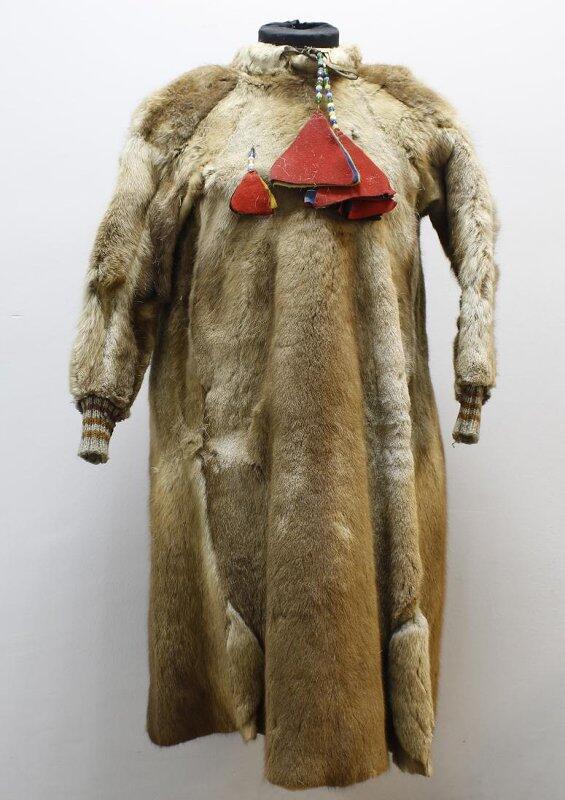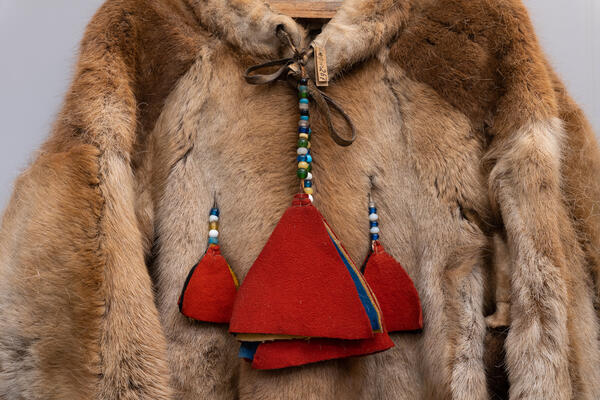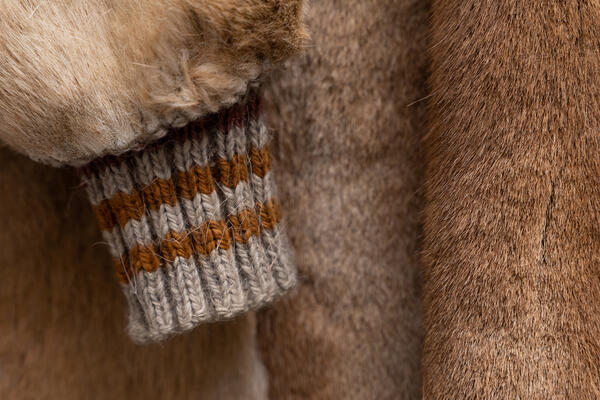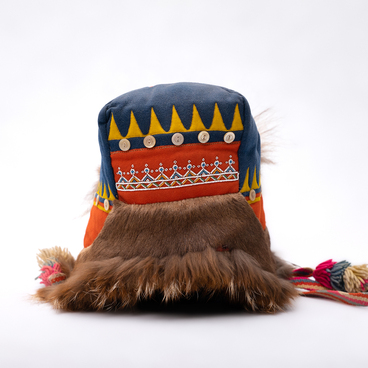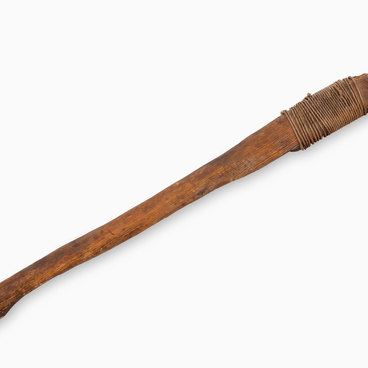The Sami are one of the small indigenous peoples of the North. The main occupation of Sami people is reindeer herding. Reindeer is a means of transportation across the tundra, with its meat being a source of food, and its skins — the material for sewing clothes and footwear, and for covering dwellings. In addition to reindeer skins, tanned leather, cloth, canvas and calico were used for sewing and finishing clothes. Threads were made from reindeer tendons.
In winter Sami people wore a shirt and they put on either a cloth blouse or a short shirt over the first one. A pechok was worn as an outer garment. A pechok, or peska (among the Kola Sami), is an outer winter buttoned up clothing with a standing collar, sewn from two reindeer skins, fur on the outside.
The fur sleeves of the coat were sometimes extended by stitching on cuffs made of fabric. Pieces of colored cloth were used to decorate the collar and cuffs of the sleeves. Straps near the collar were adorned with tassels, cloth flaps, and beads. The hem of a woman’s pechok was also decorated. Besides strips of colored cloth, braid, beads and mother-of-pearl buttons were also used for decoration.
A man’s pechok was just below the knees long, a woman’s one was down to the ankle. The coat flared towards the hem. The sleeves had trapezoidal gussets, and the shoulder part was made up of horizontal strips of fur.
Sami people also had a more ancient garment called a tork, or torka. Unlike the pechok, which was sewn with fur on the outside, the tork was sewn with fur on the inside. A tork was sometimes worn under the pechok.
The pechok was usually worn together with pymas — winter felt footwear.
Since a pechok became winter unisex casual clothing, there was a necessity to make a difference between men and women. In this case, the headdresses — women’s and men’s hats, made in different colors — helped to clarify the situation.
With the arrival of the Izhma-Komi ethnic group to the Kola North at the end of the 19th century, the pechok was no longer the only kind of winter clothing. Sami people began to wear a malitsa, which, unlike the pechok, was sewn with fur inside and had mittens and a hood sewn on it.
According to the household census of 1926–1927,
Izhma (Nenets) sledges, harnesses, pyma felt boots and malitsa were distributed
among the Sami and Russian Pomors. The cultural exchange was mutual: for
example, Izhma craftswomen learnt from Sami needlewomen how to decorate furs
with beads and cloth.

